Discover how to stay active and competitive year-round with these engaging Best 5 indoor solo sports – perfect for the independent athlete in you!
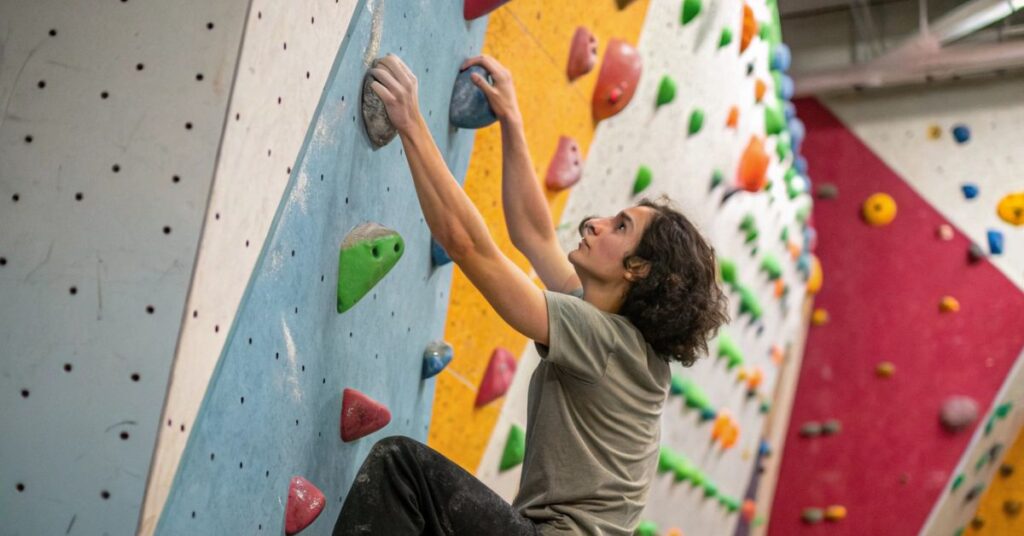
Have you ever found yourself wanting to stay active but dreading the thought of coordinating schedules with teammates or battling weather conditions? I’ve been there. As someone who’s explored numerous indoor sports over the years, I can tell you that solo indoor sports aren’t just a convenience – they’re a gateway to personal growth and athletic excellence that fits perfectly into your busy lifestyle. In fact, research shows that individual sports can be particularly beneficial for adults looking to maintain an active lifestyle while balancing other commitments.
Why Indoor Solo Sports Are Having Their Moment
The landscape of fitness and athletics has undergone a dramatic shift. While team sports will always have their place, indoor solo sports’ popularity has increased, and it’s not hard to see why. These activities offer the perfect blend of convenience, personal challenge, and year-round accessibility that today’s busy professionals crave. According to recent sports participation trends, solo sports are becoming increasingly popular among adults seeking flexible fitness options.
The Modern Athlete’s Perfect Match
Picture this: It’s 10 PM, you’ve just finished a long day at work, and instead of coordinating with teammates or rushing to meet a class schedule, you can head straight to your chosen venue and dive into your practice session. That’s the beauty of solo sports – they work on your terms.
Top Indoor Solo Sports to Consider
1. Indoor Rock Climbing
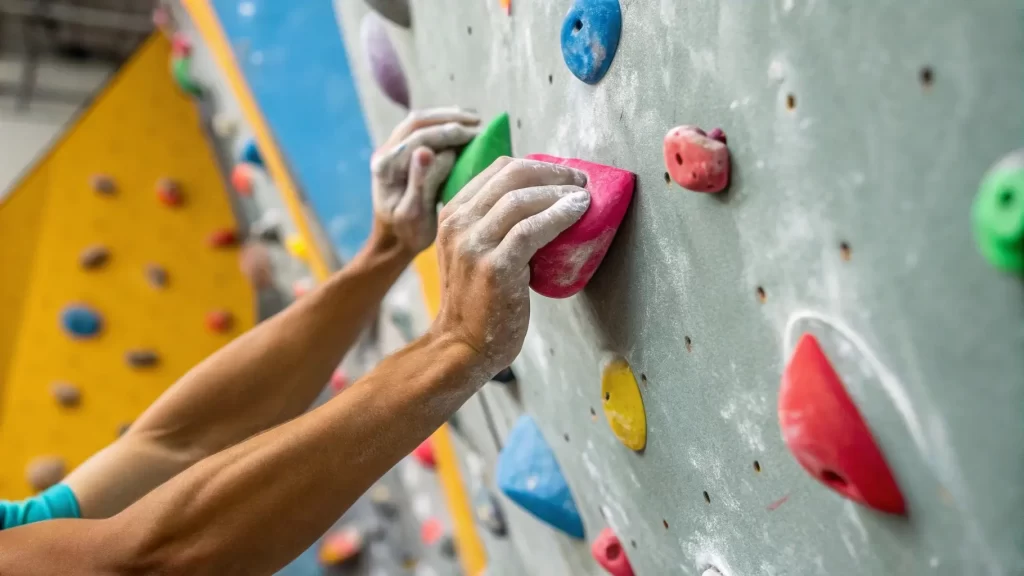
Let me tell you about my first experience with indoor climbing – I was terrified and exhilarated all at once. Now, it’s become my go-to workout for both body and mind. Ranked among the top individual sports, climbing offers unique benefits that set it apart. Here’s what makes it special:
- Physical Benefits:
- Full-body workout engaging every major muscle group
- Improves flexibility and core strength
- Develops grip strength and endurance
- Mental Aspects:
- Problem-solving skills through route planning
- Focus and concentration enhancement
- Natural progression system through difficulty grades
2. Table Tennis
You might be thinking, “Isn’t this just a basement game?” Trust me, competitive table tennis is a whole different world. It’s one of the most technically demanding sports you can practice solo, thanks to modern training equipment.
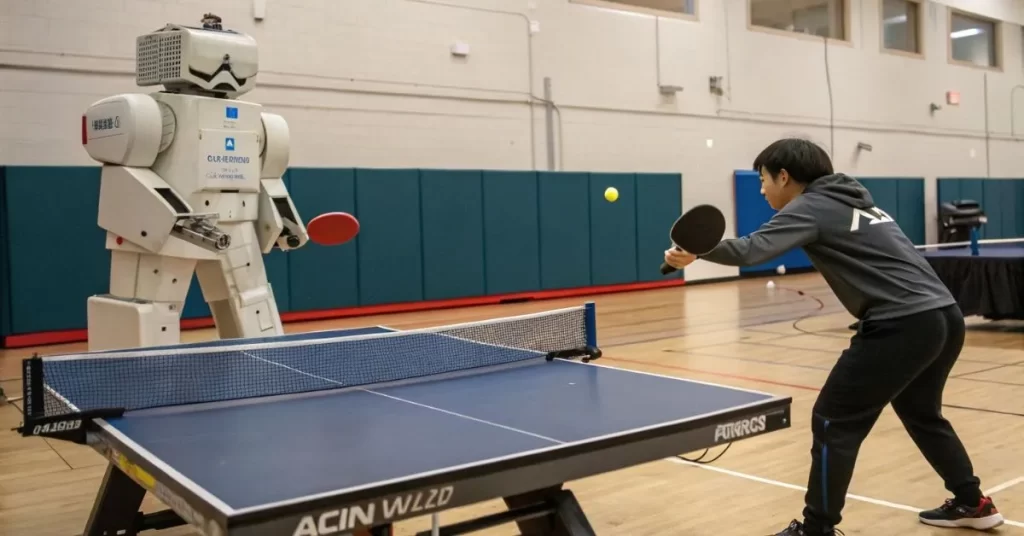
Pro Tip: Many facilities now offer robot practice partners that can simulate different playing styles and spin variations.
3. Indoor Swimming

Swimming might be the ultimate meditation in motion. As someone who started lap swimming to recover from a running injury, I discovered it’s so much more than just an alternative workout.
Key Benefits:
- Zero-impact cardiovascular training
- Full-body resistance workout
- Excellent for stress relief and mental clarity
4. Bouldering
Think of bouldering as rock climbing’s more accessible cousin. It requires minimal equipment and no partner, making it perfect for spontaneous training sessions.
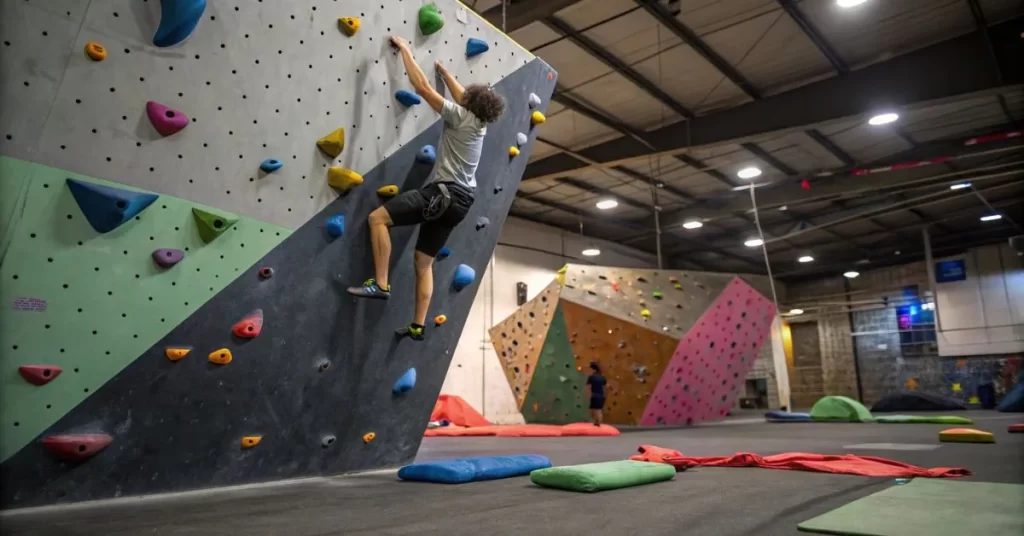
Bouldering is a style of rock climbing that involves climbing short, yet challenging routes called “problems” without the use of ropes or harnesses. Climbers rely on their strength, technique, and problem-solving skills to navigate these routes, which are typically no higher than 15-20 feet (4.5-6 meters). The climbing walls are equipped with thick mats or crash pads to ensure safety during falls.
Key Benefits:
- Self-Paced Activity
- Full-Body Workout
- Mental Challenge
- Progress Tracking
5. Indoor Archery
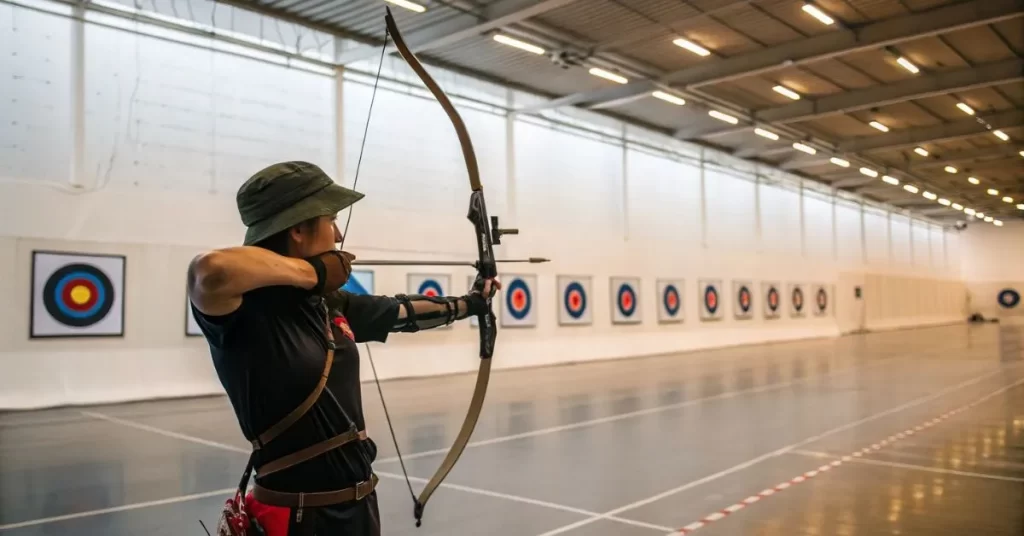
Indoor archery involves shooting arrows at stationary targets within a controlled environment, typically in a designated archery range. This sport can be practiced year-round, regardless of weather conditions, making it an ideal choice for individuals seeking a consistent workout routine.
There’s something incredibly zen about archery. It combines physical precision with mental focus in a way few other sports can match.
Key Benefits:
- Focus and Concentration
- Physical Benefits
- Personal Progression
- Stress Relief
Getting Started: Your Solo Sports Journey
Essential Considerations
- Facility Access
- Research local venues
- Compare membership options
- Check operating hours
- Equipment Investment
- Start with rental equipment
- Gradually build your personal gear collection
- Focus on quality for safety-critical items
- Skill Development
- Book initial instruction sessions
- Use online resources for technique study
- Track your progress systematically
Training Tips for Solo Athletes
Creating Structure Without a Team
One of the biggest challenges in solo sports is maintaining motivation without external accountability. Here’s what works for me:
- Set Clear Goals
- Daily technique focus areas
- Weekly achievement targets
- Monthly progression milestones
- Track Your Progress
- Keep a training journal
- Record personal bests
- Document technique improvements
Safety Considerations
When practicing solo sports, safety becomes even more crucial. Always:
- Inform facility staff you’re training alone
- Use appropriate safety equipment
- Know your limits and respect them
- Maintain awareness of your surroundings
Building Community in Solo Sports
Just because you’re practicing alone doesn’t mean you have to be isolated. I’ve found some of my closest friends through solo sports communities:
- Join online forums and local groups
- Participate in competitions
- Attend workshops and clinics
- Share your journey on social media
Conclusion: Your Solo Sports Adventure Awaits
Indoor solo sports offer a unique blend of personal challenge, convenience, and satisfaction. Whether you’re a busy professional, an independent spirit, or someone looking to try something new, there’s an indoor solo sport waiting for you.
Remember, the journey of athletic development is deeply personal, and that’s exactly what makes solo sports so rewarding. You’re not just participating in a sport – you’re crafting your path to excellence.
Ready to begin your solo sports journey? Check out local facilities in your area and take that first step toward your new athletic passion.
Find Your Perfect Indoor Solo Sport
Frequently Asked Questions About Indoor Solo Sports
What indoor sports can I do by myself?
There are many exciting options for solo indoor sports! The most popular choices include indoor rock climbing, swimming, table tennis (with practice robots or return boards), archery, bouldering, and indoor golf simulators. I started with indoor climbing and found it to be an incredible way to challenge myself both physically and mentally.
How much does it typically cost to start an indoor solo sport?
The initial investment varies depending on the sport. Basic memberships at facilities typically range from $30-100 per month. For example, a climbing gym membership might cost around $60-80 monthly, while swimming pool access often runs $40-60. Equipment costs can range from minimal (just swimwear for swimming) to moderate (around $200 for basic archery equipment).
Can I practice indoor solo sports as a complete beginner?
Absolutely! Most indoor solo sports are very beginner-friendly. Facilities usually offer introductory lessons, equipment rentals, and basic safety training. From my experience teaching beginners, sports like swimming and table tennis are particularly accessible for newcomers, while activities like rock climbing have well-defined progression systems that make learning enjoyable.
How often should I practice an indoor solo sport to see improvement?
For consistent progress, aim to practice 2-3 times per week initially. This gives your body enough time to recover while maintaining skill development. I've found that even one focused hour-long session per week can lead to noticeable improvements, especially when you're just starting.
Are indoor solo sports effective for weight loss?
Yes, indoor solo sports can be excellent for weight loss when combined with proper nutrition. For instance, swimming can burn 400-700 calories per hour, while rock climbing can burn 500-900 calories per hour. The key is finding a sport you enjoy enough to practice regularly – that's what makes it sustainable for long-term fitness goals.
Do I need special equipment to start an indoor solo sport?
It depends on the sport, but many facilities offer rental equipment for beginners. Here's a quick breakdown:
- Swimming: Just needs swimwear, goggles, and a cap
- Rock Climbing: Shoes and harness (usually available for rent)
- Table Tennis: Basic paddle (often provided by facilities)
- Archery: Equipment usually provided in beginner classes
How can I stay motivated when practicing sports alone?
From personal experience, I've found several effective strategies:
- Set specific, measurable goals for each session
- Track your progress using apps or a training journal
- Join online communities or local groups for your chosen sport
- Participate in solo sports competitions or challenges
- Use fitness tracking devices to monitor improvements
Is it safe to practice indoor sports alone?
Most indoor facilities have safety protocols and staff present. However, it's important to:
- Always inform facility staff when you're practicing alone
- Use appropriate safety equipment
- Start within your skill level
- Learn proper warm-up and cool-down routines
- Know your limits and listen to your body
Can I practice multiple indoor solo sports at once?
Yes! I recommend trying a few different sports to find what you enjoy most. Many solo sports complement each other well – for example, swimming can be a great active recovery for climbing, while archery can help develop a focus that benefits other sports.
What are the mental health benefits of indoor solo sports?
Indoor solo sports offer numerous mental health benefits:
- Reduced stress and anxiety through focused activity
- Improved concentration and mental clarity
- Increased self-confidence through skill progression
- Mindfulness development through solo practice
- Sense of achievement from personal improvement






